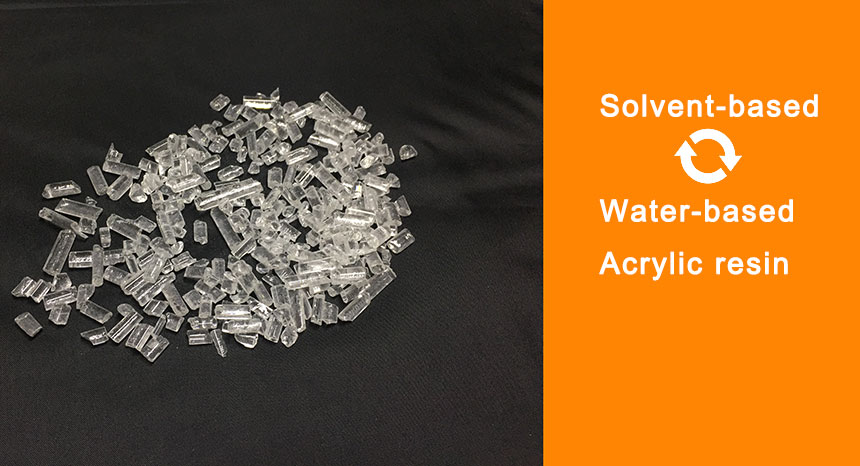Solvent-based acrylic resin can be converted to water-based acrylic resin by selecting suitable non-ionic or anionic emulsifiers.
1. Principle of conversion to water-based
In regular applications, solvent based acrylic resins require the use of organic solvents as diluents and solvents. Compared with such organic solvents, water-based resins are not only environmentally friendly, but also have better physical and chemical properties, which can provide users with more economical and practical options. For conversion to water-based acrylic resins, the emulsification method is mainly used, that is, the organic solvent-based resin is evenly dispersed in the water phase through the action of an emulsifier to form an emulsion, and the organic solvent is evaporated under appropriate temperature, pH and other conditions, so that the resin molecules are repolymerized in the water phase to form a water-based resin.

|
Property |
Solvent-based resin |
Water-based resin |
|
Diluent |
Organic solvent |
Water |
|
VOC emission |
High |
Very low |
|
Construction safety |
Flammable and explosive |
Safe |
|
Cost-effectiveness |
High solvent cost |
More economical (water dilution) |
Process principle:
Use emulsifier to evenly disperse the resin in the water phase → evaporate and remove the organic solvent → reconstruct the resin molecules in the water phase → form a stable aqueous dispersion
|
Emulsifier Type |
Applicability |
Characteristics |
Recommended Models |
|
Non-ionic |
★★★★★ |
Adjustable HLB value, good electrolyte resistance |
Alkylphenol ethoxylates |
|
Anionic |
★★★★☆ |
High emulsification efficiency, pH sensitivity |
Sodium dodecylbenzene sulfonate |
|
Cationic |
★★☆☆☆ |
For special applications |
Quaternary ammonium compounds |
1. The characteristics of emulsifiers include hydrophilicity, lipophilicity, and parent-child characteristics.
Emulsifiers with strong hydrophilicity can stably disperse resin particles so that they are not easy to aggregate and precipitate; emulsifiers with strong lipophilicity are often used to control molecular size and enhance sedimentation.
2. Amount of emulsifier
The appropriate amount of emulsifier can make the resin particles in the system dispersed evenly without condensation and precipitation. At the same time, too much emulsifier will increase production costs and reduce economic benefits. Generally speaking, the amount of emulsifier is 10%-30%.
3. Other factors
The pH value, temperature, stirring speed, solvent type, etc. of the emulsifier will have an important impact on the emulsification effect and need to be considered comprehensively.
|
Parameter |
Control Range |
Effect |
|
Dosage |
10-30% |
Too low causes unstable dispersion, too high affects cost |
|
pH value |
7-9 |
Affects emulsion stability |
|
Temperature |
60-80°C |
Optimizes emulsification efficiency |
|
Agitation speed |
800-1500 rpm |
Controls particle size distribution |
iSuoChem is a professional company that has been focusing on coatings, ink resins and additives for 20 years. It mainly deals in acrylic resins, acrylic emulsions, chlorinated polypropylene resins, polyamide resins, chloroether resins, as well as dispersants, leveling agents, defoamers, ice flower paints, wax powders and other additives.